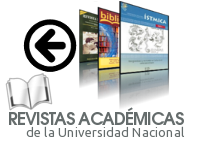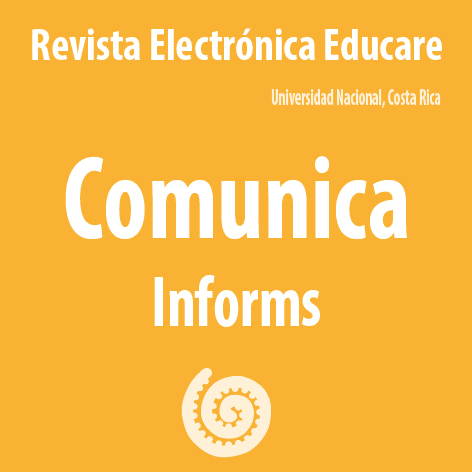Alternative Models for the Percentage Distribution of Progress Levels in Research Projects
DOI:
https://doi.org/10.15359/ree.28-3.18582Keywords:
Project management, Quality control, analytical hierarchy process, research work, performance evaluation, qualitative and quantitative monitoring models, effectiveness measurement, SDG 4, Quality education, academic performance, SDG 9, Industry, innovation and infraestructure, process planningAbstract
Introduction. There is a need to standardize the percentage distribution of research project progress levels. The research problem is: How can a percentage distribution of research project progress levels be designed, considering qualitative criteria? The general objective is to develop alternative models of percentage distribution of research project progress levels while considering qualitative criteria. Methodology. The study employed a descriptive-projective level of methodological development. The unit of analysis comprised descriptive, correlational, or explanatory research projects conducted by university faculty, with a total population of 126 projects. The research design was descriptive-longitudinal, utilizing documentary analysis as the data collection and analysis technique. A documentary analysis form was used as the instrument, and data processing was conducted quantitatively by calculating the percentage progress levels for each project. Results. Three models were developed for determining the progress levels of research projects, incorporating different criteria of percentage distribution, which can be considered for measuring results. Discussion. There is a logical relationship between the fundamental components of a strategy, enabling its effective development and impact on the results achieved. Measuring the effectiveness of a strategy requires integrating the achievement of specific objectives into the general objective. Therefore, it is important to consider a hierarchy of indicators to understand each phase’s contribution to achieving each specific objective; this includes determining the percentage of contribution to the project’s progress.
References
Abdelmoneim, Z. & Fekry, M. A. (2021). Using managerial and market tools to measure the impact of acquisition operations on firm performance. Investment Management and Financial Innovations, 18(1), 315-334. https://doi.org/10.21511/imfi.18(1).2021.26
Abellán, J. & Segovia, Y. (2024). Aprendiendo a enseñar mediante el modelo de educación deportiva en centros de educación especial: De la teoría a la práctica. Retos, 59, 138-145. https://recyt.fecyt.es/index.php/retos/article/view/106909/79296
Al-Bahi, A. M., Abd-Elwahed, M. S. & Soliman, A. Y. (2021). Implementation of sustainability indicators in engineering education using a combined balanced scorecard and quality function deployment approaches. Sustainability, 13(13), 1-28. https://doi.org/10.3390/su13137083
Al-Hosaini, F. F., Ali, B. J. A., Baadhem, A. M., Jawabreh, O., Bani Atta, A. A. & Ali, A. (2023). The impact of the Balanced Scorecard (BSC) non-financial perspectives on the financial performance of private universities. Information Sciences Letters, 12(9), 2903-2913. https://digitalcommons.aaru.edu.jo/cgi/viewcontent.cgi?article=2211&context=isl
Bai, S. & Zhao, Y. (2021). Startup investment decision support: Application of venture capital scorecards using machine learning approaches. Systems, 9(3), 1-11. https://doi.org/10.3390/systems9030055
Barata, F. A. (2021). Performance measurement of supply chains and distribution industry using balanced scorecard and fuzzy analysis network process. Decision Science Letters, 10(3), 401-414. https://www.growingscience.com/dsl/Vol10/dsl_2021_4.pdf
Caballero Romero, A. (2014). Metodología integral innovadora para planes y tesis. La metodología del cómo formlarlos. Cengage Learning. https://issuu.com/cengagelatam/docs/metodolog__a_integral_innovadora_is
Chalmeta, R. & Barqueros-Muñoz, J.-E. (2021). Using big data for sustainability in supply chain management. Sustainability, 13(13), 1-25. https://doi.org/10.3390/su13137004
Chiang, J.-T., Chiou, C.-C., Doong, S.-C. & Chang, I.-F. (2020). Research on the construction of performance indicators for the marketing alliance of catering industry and credit card issuing banks by using the balanced scorecard and fuzzy AHP. Sustainability, 12(21), 1-24. https://doi.org/10.3390/su12219005
Dwivedi, R., Prasad, K., Mandal, N., Singh, S., Vardhan, M. & Pamucar, D. (2021). Performance evaluation of an insurance company using an integrated balanced scorecard (BSC) and best-worst method (BWM). Decision Making: Applications in Management and Engineering, 4(1), 33-50. https://dmame-journal.org/index.php/dmame/article/view/165/64
Eguía Dibildox, J. C. & Rodríguez Combeller, C. (2021). El aliado estratégico. La consultoría organizacional con visión sistémica. Guadalajara: ITESO. https://books.google.co.cr/books?id=63lIEAAAQBAJ&printsec=frontcover#v=onepage&q&f=false
Fonseca Luna, O. (2013). Sistemas de control interno para organizaciones. Guía práctica y orientaciones para evaluar el control interno. ICCO.
Gallo, P., Dobrovič, J., Čabinová, V., Pártlová, P., Straková, J. & Mihalčová, B. (2021). Increasing the efficiency of enterprises in tourism sector using innovative management methods and tools. Social Sciences, 10(4), 1-13. https://doi.org/10.3390/socsci10040132
Gambelli, D., Solfanelli, F., Orsini, S. & Zanoli, R. (2021). Measuring the economic performance of small ruminant farms using balanced scorecard and importance‐performance analysis: A European case study. Sustainability, 13(6), 1-13. https://doi.org/10.3390/su13063321
He-Kailun & Min, L. (2021). Research on performance evaluation mechanism of fresh agricultural products distribution system. E3S Web of Conferences, 253, 1-5. https://www.e3s-conferences.org/articles/e3sconf/pdf/2021/29/e3sconf_eem2021_03061.pdf
Kaplan, R. S. & Norton, D. P. (2014). El cuadro de mando integral: The balanced scorecard (3a ed.). Harvard Business Press. https://books.google.co.cr/books?id=eboSAQAAQBAJ&printsec=frontcover#v=onepage&q&f=false
Kim, D., Oh, W., Yun, J., Youn, J., Do, S. & Lee, D. (2021). Development of key performance indicators for measuring the management performance of small construction firms in Korea. Sustainability, 13(11), 1-15. https://doi.org/10.3390/su13116166
Luo, Y., Zhan, C., Liu, Y. L., Yu, H. & Li, R. (2021). Application research of customer side integrated energy service system based on machine learning. IOP Conference Series: Earth and Environmental Science, 692(2), 1-8. https://iopscience.iop.org/article/10.1088/1755-1315/692/2/022011/pdf
Miñán Olivos, G. S., Dios Castillo, C. A., Cardoza Zernaqué, M. A. & Pulido Joo, L. A. (2021). The role of the industrial engineer in Peru in the context of COVID-19 pandemic. Universidad y Sociedad, 13(1), 59-63. http://scielo.sld.cu/pdf/rus/v13n1/2218-3620-rus-13-01-59.pdf
Na, H. J., Lee, K. C. & Kim, S. T. (2021). Integrating text-mining and balanced scorecard techniques to investigate the association between CEO message of homepage words and financial status: Emphasis on hospitals. Healthcare, 9(4), 1-13. https://doi.org/10.3390/healthcare9040408
Paoletti, F., Giorgio, V., Jaser, A., Zanoni, N. R., Ricciardi, W., Citterio, F. & de Belvis, A. G. (2023). Process control: Simply a matter of efficiency or of survival and costs? A single-centre quality improvement project in living donor renal transplant. BMC Health Services Research, 23(1), 1-11. https://bmchealthservres.biomedcentral.com/articles/10.1186/s12913-023-09183-3
Project Management Institute (PMI) (2019). El estándar para la dirección de programas (4a ed.). Pennsylvania. https://books.google.co.cr/books?id=7iaFDwAAQBAJ&printsec=frontcover#v=onepage&q&f=false
Ridwan, M. & Sudirman, I. (2021). Integration of the analytical hierarchy process (AHP) - balance score card (BSC) model in selection of broiler agribusiness partnership model to increase income of the breeders partner in South Sulawesi. IOP Conference Series: Earth and Environmental Science, 788(1), 1-9. https://iopscience.iop.org/article/10.1088/1755-1315/788/1/012215/pdf
Rogers, H. L., Barros, P. P., de Maeseneer, J., Lehtonen, L., Lionis, C., McKee, M., Siciliani, L., Stahl, D., Zaletel, J. & Kringos, D. (2021). Resilience testing of health systems: How can it be done? International Journal of Environmental Research and Public Health, 18(9), 1-17. https://doi.org/10.3390/ijerph18094742
Sánchez-Márquez, R., Albarracín Guillem, J. M., Vicens-Salort, E. & Jabaloyes Vivas, J. (2020). A systemic methodology for the reduction of complexity of the balanced scorecard in the manufacturing environment. Cogent Business and Management, 7(1), 1-18. https://www.tandfonline.com/doi/epdf/10.1080/23311975.2020.1720944?needAccess=true
Suárez-Gargallo, C. & Zaragoza-Sáez, P. (2021). How the balanced scorecard is implemented in the Spanish footwear industry. Sustainability, 13(10), 1-20. https://doi.org/10.3390/su13105641
Teichgräber, U., Sibbel, R., Heinrich, A. & Güttler, F. (2021). Development of a balanced scorecard as a strategic performance measurement system for clinical radiology as a cost center. Insights into Imaging, 12(1), 1-8. https://insightsimaging.springeropen.com/articles/10.1186/s13244-021-01009-2
Victor, S. & Farooq, A. (2021). Dashboard visualisation for healthcare performance management: Balanced scorecard metrics. Asia-Pacific Journal of Health Management, 16(2), 1-11. https://journal.achsm.org.au/index.php/achsm/article/view/625/527
Winkelmann, T., Zimmermann, J., & Vollmann, E. (2023). Boulevard of broken dreams: Public audit, mobility infrastructure deficits and the limits of correction in Germany. Energy, Sustainability and Society, 13(1), 1-15. https://energsustainsoc.biomedcentral.com/articles/10.1186/s13705-023-00385-5
Wu, H. & Qi, Y. (2021). Computer performance appraisal system based on balanced scorecard under the internet background. Journal of Physics: Conference Series, 1881(3), 1-8. https://iopscience.iop.org/article/10.1088/1742-6596/1881/3/032012/pdf
Yang, Q. & Yu, X. (2021). Evaluation of rural water environment governance in Changzhou. IOP Conference Series: Earth and Environmental Science, 804(4), 1-9. https://iopscience.iop.org/article/10.1088/1755-1315/804/4/042026/pdf
Yu, Q. & Yan, P. (2021). Design of performance evaluation index of scientific research projects based on BSC. E3S Web of Conferences, 251, 1-6. https://www.e3s-conferences.org/articles/e3sconf/pdf/2021/27/e3sconf_ictees2021_03061.pdf
Downloads
Published
How to Cite
Issue
Section
Categories
License
Copyright (c) 2024 Christian Abraham Dios-Castillo, Liliana González-Palacio, Mariana Chávarry-Chankay, Gilberto Carrión-Barco

This work is licensed under a Creative Commons Attribution-NonCommercial-NoDerivatives 3.0 Unported License.
1. In case the submitted paper is accepted for publication, the author(s) FREELY, COSTLESS, EXCLUSIVELY AND FOR AN INDEFINITE TERM transfer copyrights and patrimonial rights to Universidad Nacional (UNA, Costa Rica). For more details check the Originality Statement and Copyright Transfer Agreement
2. REUTILIZATION RIGHTS: UNA authorizes authors to use, for any purpose (among them selfarchiving or autoarchiving) and to publish in the Internet in any electronic site, the paper´'s final version, both approved and published (post print), as long as it is done with a non commercial purpose, does not generate derivates without previous consentment and recognizes both publisher's name and authorship.
3. The submission and possible publication of the paper in the Educare Electronic Journal is ruled by the Journal’s editorial policies, the institutional rules of Universidad Nacional and the laws of the Republic of Costa Rica. Additionally, any possible difference of opinion or future dispute shall be settled in accordance with the mechanisms of Alternative Dispute Resolution and the Costa Rican Jurisdiction.
4. In all cases, it is understood that the opinions issued are those of the authors and do not necessarily reflect the position and opinion of Educare, CIDE or Universidad Nacional, Costa Rica. It is also understood that, in the exercise of academic freedom, the authors have carried out a rogorous scientific-academic process of research, reflection and argumentation thar lays within the thematic scope of interest of the Journal.
5. The papers published by Educare Electronic Journal use a Creative Commons License:














 The articles published by Educare Electronic Journal can be shared with a Creative Commons License:
The articles published by Educare Electronic Journal can be shared with a Creative Commons License: 



